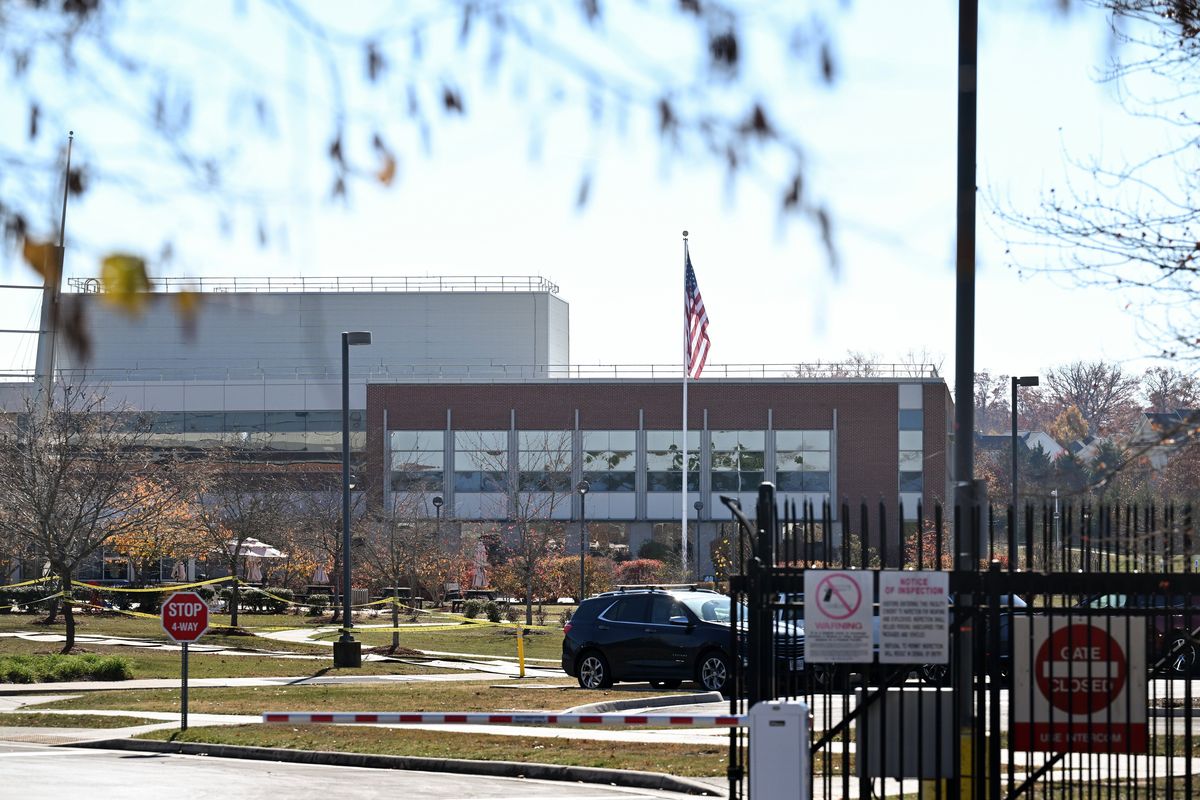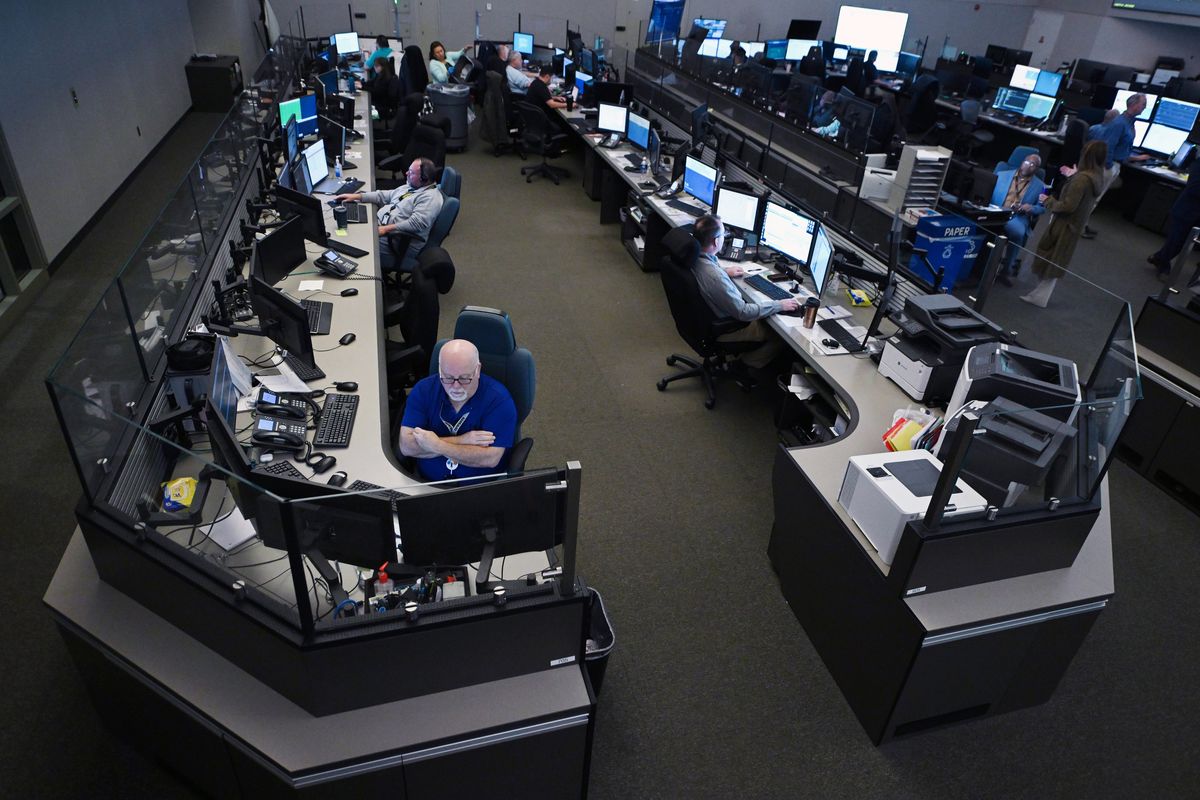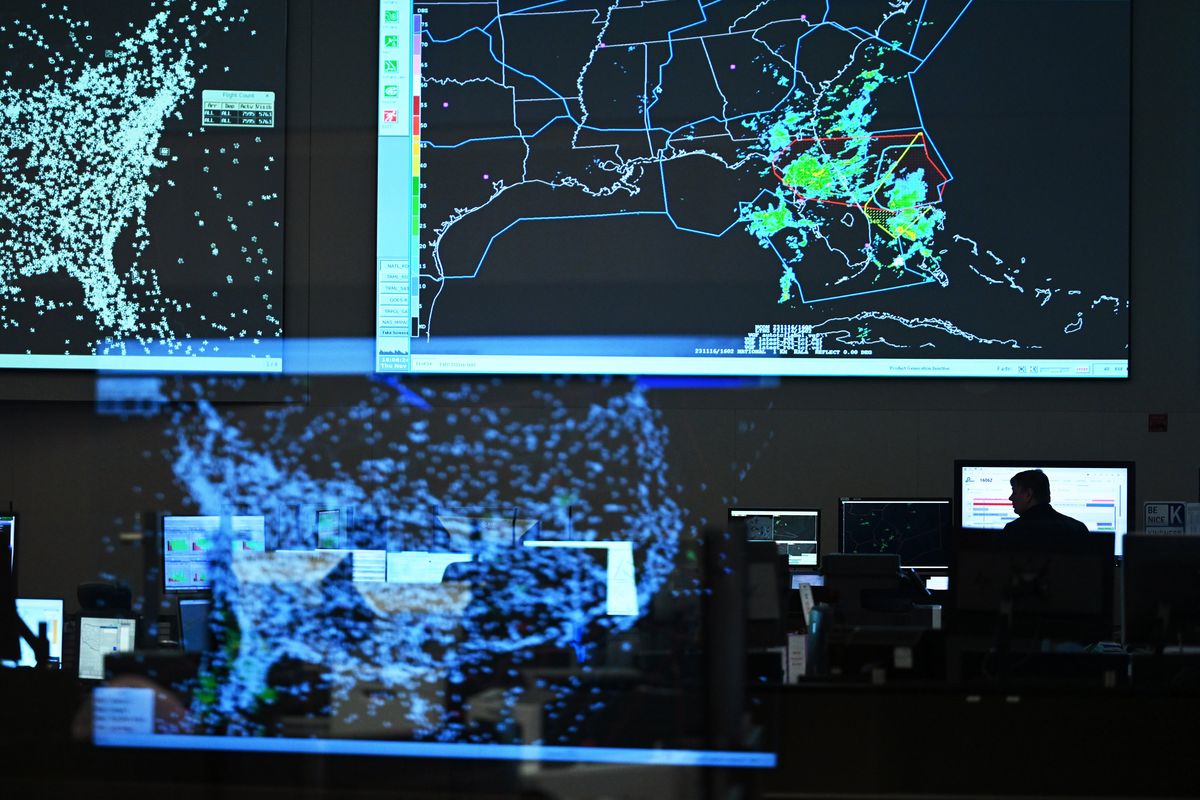At FAA command center, round-the-clock work to keep holiday flights on track
Workers are seen at an FAA Air Traffic Control command center in Warrenton, Va. (Matt McClain/The Washington Post)
WARRENTON, Va. – It’s early on a recent morning, and already there’s trouble brewing over Florida. Storms are parked over the state, creating the potential for flight delays as the busy Thanksgiving travel period ramped up.
For workers at the Federal Aviation Administration’s Air Traffic Control System Command Center an hour outside Washington, it’s familiar territory. Storms in Florida. Fog in San Francisco. A special event in Las Vegas that means more private air traffic into the city. The scenarios are familiar, but managing tens of thousands of flights each day depends on what is happening across the nation’s skies.
The Virginia facility is the nerve center for the nation’s air traffic controllers, whose work will intensify as holiday air traffic peaks Wednesday, the busiest day for flights during what’s expected to be the third-busiest Thanksgiving travel period ever, according to AAA. The demands on the U.S. airspace is coming after federal transportation officials vowed in recent days that despite high-profile worker shortages and passenger frustrations, they are ready for the hordes of travelers heading to the airport.
In his first public appearance as the FAA’s new administrator, Michael Whitaker said this week the agency is expanding the number of routes available to commercial aircraft, including those generally reserved for military use. Commercial space launches have been put on hold, and commercial flights will be given priority over private jets.
The FAA estimates it will manage nearly 400,000 flights during nine days centered on Thanksgiving, while AAA estimates more than 55 million people are expected to travel at least 50 miles from home, mostly in cars. The Transportation Security Administration expects to screen 30 million people over a 12-day span that began Friday.
“This holiday season is estimated to bring some of the busiest travel days in U.S. history, building on a summer that was already record-breaking,” Transportation Secretary Pete Buttigieg said Monday, noting that airlines this year have recorded their lowest flight cancellation rates in five years.
The near-record number of holiday travelers this Thanksgiving is a test for an industry whose rapid pandemic recovery led to significant rates of cancellations and delays. After a rocky restart, airlines adjusted schedules and hired tens of thousands of employees to replace those who left, a move that has coincided with fewer canceled flights.
The FAA has made less progress in shoring up its workforce. Training of new air traffic controllers was stalled by the pandemic, exacerbating staffing shortages in key facilities and forcing airlines to cut flights at New York-area airports. The agency also went without a permanent leader for 18 months, until Whitaker was confirmed in October.
At a Senate hearing last month, Jennifer Homendy, chair of the National Transportation Safety Board, warned that the aviation industry must take urgent action following a spate of aircraft near misses this year. Sen. Tammy Duckworth, D-Ill., who chaired the hearing, said the incidents were a sign of a system under stress.
With Whitaker now at the helm, the FAA says it is addressing issues that have led some to question its reputation as the world’s premier air safety regulator. The agency last week announced plans to increase the recruitment and retention of air traffic controllers after a report warned the FAA’s reliance on outdated technology and overtime to staff air traffic control facilities is eroding safety.
The agency also formed a committee to develop recommendations for pilots dealing with mental health concerns after an off-duty pilot last month was accused of trying to shut down the engines of a commercial flight.
In the short-term, the focus for air traffic control staff is the safety of travelers on the move through the holidays. Many of the decisions about how that traffic is managed will be made at the FAA facility in Warrenton, the only one of its kind in the country.
If the national airspace is a symphony, said Jeeja Vengal, air traffic manager at the command center, “The command center is the conductor.” She said its bird’s-eye view of the system enables traffic management specialists to identify potential chokepoints and make plans to prevent weather, equipment outages or other issues from rippling through rest of the national airspace.
The work takes place in a cavernous room inside a two-story brick building – much like a high school gymnasium, minus the bleachers and basketball hoops – where nearly 100 FAA workers monitor operations across the country to identify trouble spots. Six giant screens line the front of the room, displaying system maps and other key information. On a recent day, one is zeroed in on Florida, where patches of blue, green and yellow indicate storms, while another is focused on the Dallas-Fort Worth area to monitor weather and construction that could affect flights. An American flag hangs on the back wall.
On the floor of the command center is a constant buzz of conversation, punctuated by radio squawks and ringing phones. Every two hours, from 7:15 a.m. to 9:15 p.m., systemwide planning meetings are scheduled.
The planner in charge starts by checking in with FAA facilities across the country, as well as individual airlines. His rapid fire delivery, clear and precise, could rival the most seasoned auctioneer.
“Let’s go to Miami,” he says. “Miami, good morning.”
The focus then swings to Minnesota, where minutes before, a ground delay was put into place to manage the effects of high winds. Minnesota reports the strategy is working.
“Ground delay program looks good,” the planner responds. “Down to Texas.”
“American Airlines, any concerns?”
Hearing none, it’s over to the West Coast to check in with Oakland International Airport. Around 2:30 p.m., a group will begin working on a plan for the next day.
According to data provided by flight-tracking website FlightAware, it proved to be a day with no major issues: 0.2 percent of scheduled flights were canceled while 14 percent were delayed an average of 44 minutes.
But with forecasters predicting rain and possible snow beginning Tuesday along much of the eastern United States, other days around Thanksgiving could prove trickier.
Forecasters with the Capital Weather Gang said storms could create delays before sunnier conditions arrive on Thursday. Buttigieg said drivers should check road conditions ahead of time, while those planning to fly should check with airlines before leaving for the airport.
“While we don’t control the weather, we’re doing everything in our power to keep flights safe and keep cancellations and delays low this Thanksgiving,” he said. “We want the airspace to operate as efficiently as possible. But our first mission is always safety.”



